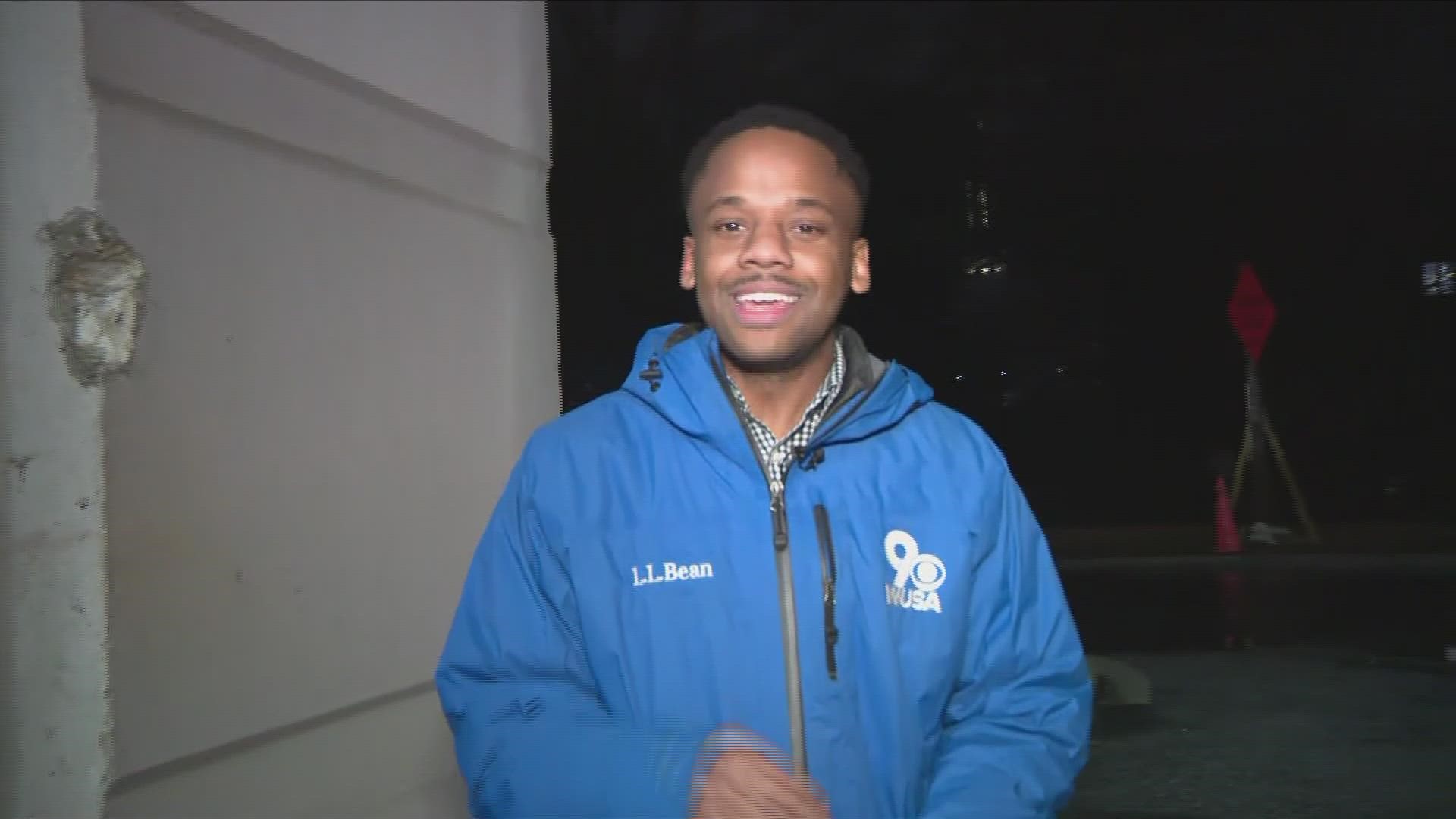WASHINGTON — Driving in the winter can be dangerous. Storms, bad weather and messy road conditions are a factor in nearly half a million crashes and more than 2,000 road deaths every winter, according to the AAA Foundation for Traffic Safety.
Mike Patierno serves as a senior driver education instructor for AA Driving Academy, a driver education company based in Herndon with branch locations across the entirety of the DMV.
He shared some tips with WUSA9 as to what local drivers can do to stay safe if they decide to hit the roads this holiday weekend.
First, Patierno recommends packing needed essentials before you leave your home.
An external battery can help charge your phone in case of an emergency. Extra blankets, food, and clothes can also come in handy if you get stuck anywhere along your trip.
Also, kitty litter can serve a special purpose too.
“Make sure you've got a shovel, make sure you've got kitty litter, something that if you're digging the snow off the tires, you can lay the kitty litter down,” he said. “So, the tires have something to grab onto as you're trying to get yourself out of a rut.”
Patierno said it’s also important to make sure your car’s is prepared to take the trip.
Drivers should test the tread of their tires, with a quarter, to gauge how vulnerable it is to sliding on the road.
“If you put the quarter in the tread and you see the top of Washington's head, you need some new tires,” Patierno said.
Also, make sure your wipers are working and that your wiper fluid has been filled to an appropriate level.
“Right now, it should be the winter solution,” he said. “So, that's good for temperatures of up to 20 below zero.”
While on the road, Patierno says you should also keep different driving tactics in mind.
For starters, do not slam your brakes if you hit a patch of black ice.
“No, take your foot off the gas,” he said. “You could tap the brake and turn into the way that you're skidding.”
Also, if you find yourself driving on a heavily ponded road, brake sooner than you normally would.
“And, when you're going to brake, start initially by just tapping on the brake,” he said. “So, you can put some of the water off of the brake drum
Patierno adds all drivers should just slow down any way and make sure they place at least three seconds of space between their car and the car ahead of them.
Here's some other winter weather tips from the AAA Foundation for Traffic Safety.
Before you go:
Stock your car with supplies you may need in an emergency, including:
- A snow shovel, broom and ice scraper.
- Abrasive material (sand or kitty litter), in case your car gets stuck in the snow.
- Jumper cables, flashlights, and warning devices (flares and emergency markers).
- Blankets.
- A cell phone and charger, water, food, and any necessary medicine.
Keep your gas tank close to full whenever possible.
- For electric and hybrid-electric cars, decrease the drain on the battery. Most all vehicle batteries will use battery power for self-heating in low temperatures. The battery drain due to heating can be minimized by keeping your electric vehicle as warm as possible during freezing temperatures.
Plan your route ahead of time.
- Check your local weather and traffic reports before leaving your house. If roads are in bad shape, consider postponing your travel plans or canceling them altogether.
- Let others know your route and anticipated arrival time.
Prepare your car.
- Check your headlights, brake light, turn signals, emergency flashers and interior lights.
- It's easy to go through a lot of windshield wiper fluid in a single snowstorm, so make sure to check that your car's reservoir is full of fluid with de-icer before winter weather happens. Make sure defrosters and all windshield wipers work and replace any worn blades.
- Make sure there is enough coolant in your car, and that it meets the manufacturer's specifications.
- Check your tires, make sure they have enough air.
Tips for driving in winter weather conditions:
- Stay home. Only travel if absolutely necessary.
- Go slow! It is significantly harder to stop your car on a slick or snow-covered road.
- Increase your following distance so that you'll have plenty of time to stop for cars ahead of you.
- Do not power up hills or stop while going up. Applying extra gas on icy roads will just make your wheels spin.
- Don't stop if you can at all avoid it.
What to do in an emergency:
Pay attention to your surroundings if you find yourself stopped or stalled in wintry weather.
- Stay with your car.
- Remain as visible as possible. Put bright markers on the antenna or windows and keep the indoor car lights on.
- Be wary of carbon monoxide poisoning. It's important to make sure your exhaust pipe is clear of any snow. Don't leave your car running for long periods of time with the windows up or in an enclosed space.
WATCH NEXT:


